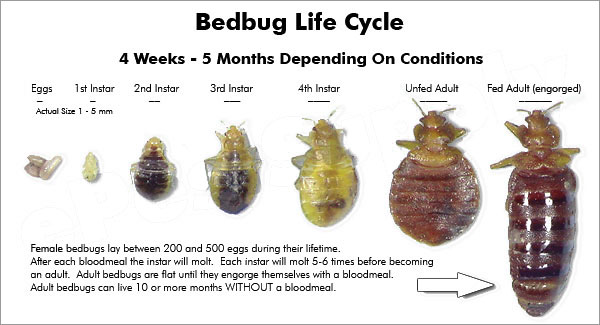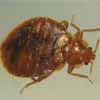Categories
- Bed Bug
- Bed Bug Cream
- BED BUG DATABASE
- Bed Bug Home Remedies
- Bed Bug Oil
- Bed Bug Remedies
- Bed Bug Spray
- Bed Bugs New York
- Bed Bugs Vancouver
- Bed Bugs World
- Bed Bugs American Samoa
- Bed Bugs Canada
- Bed Bugs Guam
- Bed Bugs North Mariana islands
- Bed Bugs Puerto Rico
- Bed Bugs United States
- Bed Bugs Alabama
- Bed Bugs Alaska
- Bed Bugs Arizona
- Bed Bugs Arkansas
- Bed Bugs California
- Bed Bugs Colorado
- Bed Bugs Connecticut
- Bed Bugs Delaware
- Bed Bugs Florida
- Bed Bugs Georgia
- Bed Bugs Hawaii
- Bed Bugs Idaho
- Bed Bugs Illinois
- Bed Bugs Indiana
- Bed Bugs Iowa
- Bed Bugs Kansas
- Bed Bugs Kentucky
- Bed Bugs Louisiana
- Bed Bugs Maine
- Bed Bugs Maryland
- Bed Bugs Massachusetts
- Bed Bugs Michigan
- Bed Bugs Minnesota
- Bed Bugs Mississippi
- Bed Bugs Missouri
- Bed Bugs Montana
- Bed Bugs Nebraska
- Bed Bugs Nevada
- Bed Bugs New Hampshire
- Bed Bugs New Jersey
- Bed Bugs New Mexico
- Bed Bugs New York
- Bed Bugs North Carolina
- Bed Bugs North Dakota
- Bed Bugs Ohio
- Bed Bugs Oklahoma
- Bed Bugs Oregon
- Bed Bugs Pennsylvania
- Bed Bugs Rhode Island
- Bed Bugs South Carolina
- Bed Bugs South Dakota
- Bed Bugs Tennessee
- Bed Bugs Texas
- Bed Bugs Utah
- Bed Bugs Vermont
- Bed Bugs Virgin Islands
- Bed Bugs Virginia
- Bed Bugs Washington
- Bed Bugs Washington DC
- Bed Bugs West Virginia
- Bed Bugs Wisconsin
- Bed Bugs Wyoming
- BedBug Removal
- BedBugs in Michigan
- Canada Bed Bugs
- Do it yourself Bed Bug
- Exterminator Bed Bugs
- Health
- Pest Inspection
- Toronto Bed Bugs
- Welcome to Bed Bugs
Registry Sites List
- Bronx Bed Bug Registry Infestation Maps, Residential And Hotel
- Brooklyn Bed Bug Registry Infestation Maps, Residential And Hotel
- Manhattan Bed Bug Registry Infestation Maps, Residential And Hotel
- Nyc Bed Bug Registry Infestation Maps, Residential And Hotel
- Queens Bed Bug Registry Infestation Maps, Residential And Hotel
- Staten Island Bed Bug Registry Infestation Maps, Residential And Hotel
Recommended Sites
Daily Archives: November 21, 2022
News Links:
Bed Bug Discrimination
Bed Bug Discrimination
 All members of the bed bug family feed on the blood of birds or mammals. The bed bug, Cimex lectularius, attacks man, as does the Eastern bat bed bug, Cimex adjunctus. Other species exist that attack bats, pigeons, and rodents. Bed bugs are active only at night, usually just before dawn. During the day, they hide in cracks and crevices in walls, floors, beds, and furniture. When only a few bed bugs are present, they live close to human sleeping areas; when numerous, they can be found in many rooms of the house. A characteristic 'œbed bug odor' is frequently present in a home infested with bed bugs.
All members of the bed bug family feed on the blood of birds or mammals. The bed bug, Cimex lectularius, attacks man, as does the Eastern bat bed bug, Cimex adjunctus. Other species exist that attack bats, pigeons, and rodents. Bed bugs are active only at night, usually just before dawn. During the day, they hide in cracks and crevices in walls, floors, beds, and furniture. When only a few bed bugs are present, they live close to human sleeping areas; when numerous, they can be found in many rooms of the house. A characteristic 'œbed bug odor' is frequently present in a home infested with bed bugs.

When bed bugs (Cimex lectularius) have adequate available blood sources they also have a shorter lifespan. Bed bugs who feed regularly have a lifespan of ten months, while those without adequate feeding can live a little more than a year. If a blood host is available, bedbugs can live to see three generations of offspring ready willing and hungry to prey on their human hosts.
Bed bugs (females) deposit three to eight eggs at a time. A total of 300-500 eggs can be produced by a single bug. Their eggs are 1/25'³ long and curved. They are often deposited in clusters and attached to cracks, crevices or rough surfaces near adult harborages with a sticky epoxy-like substance.
Eggs typically hatch in a week to 12 days. The freshly hatched nymph is beige-colored before feeding, and then turns a reddish color after getting a blood meal. There are 5 nymphal stages for bed bugs to reach maturity, which usually takes about 32-48 days. Adult bed bugs can survive for up to seven months without blood and have been known to live in empty buildings for up to one year.
 Bed bugs are oval, chestnut-brown insects and are flattened from top to bottom. Adult bed bugs (Fig. 1) measure about ¼ inch in length. The mouthparts are shaped into an elongated proboscis, which, when not in use, is held directed backward underneath the body. When a bug is ready to feed, the proboscis is extended forward and the stylets within are thrust into the skin of a host. Mated female bed bugs deposit their eggs in their resting places. One female will produce about 345 eggs during her lifespan.
Bed bugs are oval, chestnut-brown insects and are flattened from top to bottom. Adult bed bugs (Fig. 1) measure about ¼ inch in length. The mouthparts are shaped into an elongated proboscis, which, when not in use, is held directed backward underneath the body. When a bug is ready to feed, the proboscis is extended forward and the stylets within are thrust into the skin of a host. Mated female bed bugs deposit their eggs in their resting places. One female will produce about 345 eggs during her lifespan.
Bed bugs grow by molting several times. Nymphs look very much like the adults, except they are smaller and not sexually mature. There are five nymphal molts, and each nymph must have a blood meal to be able to molt to the next stage. Adults feed once a week on average but feed many times during their four-month or longer lifespan.
Bed bugs often come into a home via secondhand articles and furniture. They may also migrate between homes via wires, plumbing, or rain gutters. In addition, since warehouses, trucks, and railroad cars may be infested, common bed bugs can infest homes by stowing away on new furniture stored or shipped from these places.
The Eastern bat bed bug comes into homes in the spring with colonies of bats. They can be found in the living quarters of homes in many of the same places as common bed bugs, but the source of the infestation is located within walls or attic areas.
 Bed bug infestations have been so relevant that even famous actors and actress are not immune to the problem. In 2006 Saturday Night Live star Maya Rudolph and her husband movie director Paul Anderson were chewed upon by bed bugs in their $13,500-a-monthSoHoluxury condo.
Bed bug infestations have been so relevant that even famous actors and actress are not immune to the problem. In 2006 Saturday Night Live star Maya Rudolph and her husband movie director Paul Anderson were chewed upon by bed bugs in their $13,500-a-monthSoHoluxury condo.
Also in 2006, Bed bugs made a cameo appearance on the popular series TheKingofQueens episode "Buggie Nights" and the Dateline NBC special "Bedbugs Bite". Currently there are shows on the Discovery and TLC channels which show the daily life of an exterminator and many of the episodes are filled with bed bugdrama .
Bed bug infestations have been so relevant that even famous actors and actress are not immune to the problem. In 2006SaturdayNightLivestar Maya Rudolph and her husband movie director Paul Anderson were chewed upon by bed bugs in their $13,500-a-month SoHo luxury condo.
Posted in BED BUG DATABASE
Comments Off on Bed Bug Discrimination
Bedbugs – NYC Health – New York City
Bedbugs are small insects that are common in New York City. Adult bedbugs have flat, brown oval bodies and are about the size of an apple seed. They are usually active at night and feed on blood in order to grow and reproduce.
Bedbugs do not cause or spread diseases, but their bites can lead to infections. Some people do not have a reaction to bites and may be unaware that bedbugs are in their home until they see them.
Bedbugs like to hide inside of mattresses, under the mattress seams, and especially in the cracks and crevices on the box springs. Other than beds, these bugs often hide in cracks in furniture, floors, walls and other areas near where people sleep or lounge.
If you spot bedbugs in a residence or public place, you can submit a bedbug complaint online or by calling 311.
Bed bug infestations can be safely controlled. You can wash clothes and, in most cases, treat furniture to get rid of bedbugs. You should only throw away furniture if there are no acceptable treatments that can rid them of bedbugs, or if advised to do so by a pest management professional.
The New York City area has more than a thousand pest control companies and thousands of licensed pest management professionals. To get rid of bedbugs, you need to be clear with companies about what you want done and monitor the service you get.
The chance of picking up bedbugs when you travel is low, but it is important to take simple precautions. Bedbugs can hitch a ride on clothing and luggage, especially in places where travelers sleep. They are rarely found in planes, trains and motor vehicles. If you have bedbugs at home and will be traveling, take precautions so you do not spread them to other places.
Bed bug data from the NYC Community Health Survey can be viewed on theEnvironmental Public Health and Sustainability Tracking Portal.
Read the original post:
Bedbugs - NYC Health - New York City
Posted in Bed Bugs New York
Comments Off on Bedbugs – NYC Health – New York City
How to know if Bed Bugs are gone after Treatment & what to do
Treating bed bugs is not enough and you must therefore follow up to ensure the process was a success. Below is a discussion that explains how to know whether the bed bugs are gone, the possibility of bed bugs coming back, and what you are required to do after bed bug treatment to prevent a bed bug comeback.How to know if they are gone.Reports indicate that about 88% of bed bug infestation in America comes back. After you have carried out the bed bug treatment, you will need to follow up in order to determine if the treatment was successful.bed bug infestationIn most cases, a proper examination of whether the bed bugs re gone involves looking out for absence or presence of bed bugs infestation.Below are the most common and effective ways that will help you determine if the bed bugs are gone;Gone Bed bug bitesIf you experienced bed bug bites at the time when your home was infested with bed bugs, it will be easy for you to tell if the bed bugs no longer in your house.This is because, if you stop experiencing bites on your skin, it is an indicator that the bed bugs are gone.No Live bugsAnother way to tell if the bed bugs are completely gone is to look out for live bed bugs. When your house is infested with bed bugs, it is easy to notice the movement of live bed bugs especially at night.Adult bed bugIf you no longer see any bed bugs in any part of your house, there is likelihood that the bed bug treatment was a success.No fecal matterWhen your house is infested with bed bugs, there is noticeable fecal matter in the house. During treatment, all the fecal matter is cleaned.If you notice that there is new fecal matter in the house, then the bed bug treatment process was not successful.On the other hand, if the bed bugs fecal matter can no longer be traced in your house, you can conclude that there are no more bed bugs in the house.Before drawing a conclusion that there are no bed bugs in your house, you will need to know where exactly to check for the fecal matter. You should carefully inspect the areas below for any availability of fecal matter;
Read the original here:
How to know if Bed Bugs are gone after Treatment & what to do
Posted in Bed Bugs Virginia
Comments Off on How to know if Bed Bugs are gone after Treatment & what to do
How to Kill Bed Bugs With Steam: 9 Steps (with Pictures … – wikiHow
Co-authored by:
Pest Control Specialist
Co-authors: 30
Updated: May 24, 2021
Views:587,510
To kill bed bugs with steam, start by attaching the wide, triangular nozzle to your steam cleaner, which will cover the most surface area. Fill your tank with plain tap water and switch on your steamer. Start by steaming the highest point in the room and work your way down to the lowest point to make sure you get each and every bed bug. Steam all hard and upholstered surfaces, like mattresses, box springs, furniture, and baseboards. When you glide the nozzle across each surface, move slowly, so each section gets enough steam to kill the bed bugs and their eggs. Wait a few hours, then repeat the process 2 to 3 times to make sure you get all of the bed bugs. For more tips, including how to air out a room after steaming, read on!
Visit link:
How to Kill Bed Bugs With Steam: 9 Steps (with Pictures ... - wikiHow
Posted in Bed Bugs Virginia
Comments Off on How to Kill Bed Bugs With Steam: 9 Steps (with Pictures … – wikiHow
How to Get Rid of Bedbugs: A Step-by-Step Guide – Healthline
Bedbugs measure just 5 millimeters across, which is smaller than a pencil eraser. These bugs are smart and tough, and they reproduce quickly. Bedbugs know where to hide to avoid detection and can live for months between meals. A female can lay 500 eggs in her lifetime.
Its no surprise that these tiny bloodsuckers can cause a lot of trouble in your home. If they get into bed with you, they can leave red, itchy welts all over your body.
You can get rid of bedbugs. Try to be patient, as removing bedbugs often takes some time and effort. You may have to try a few different chemical and nonchemical approaches, especially if you have a large infestation.
Certain factors can make bedbugs harder to remove. You may have a tougher time ridding your home of them if you have a lot of clutter or you travel often and bring new bedbugs home in your luggage.
If you cannot get rid of them on your own, you may have to call in a professional exterminator. Read on for a step-by-step guide on getting rid of bedbugs.
If youve got bedbugs, you want to find them early before they start to reproduce. Its much easier and cheaper to treat a small infestation than a big one. But smaller infestations can be harder to detect.
Search for bedbugs yourself or hire a professional to do an inspection. Some inspectors use specially trained dogs to hunt down bedbugs by scent.
Bedbugs small and narrow bodies enable them to squeeze into tiny spots, like the seams of a mattress or couch and the folds of curtains.
Also, look for them:
Use a flashlight and magnifying glass to go over all of these areas.
You can spot signs of bedbugs by the following:
Once you find a bedbug, put it in a sealed jar along with 1 teaspoon of rubbing alcohol. Other types of bugs can look a lot like bedbugs. If youre not sure what type of bug youve found, bring it to an exterminator or entomologist to identify.
Once you know you have bedbugs, you need to keep them contained so you can get rid of them. A quick and easy way to trap bedbugs is with your vacuum. Run the vacuum over any possible hiding places.
This includes your:
Seal up the vacuumed contents into a plastic bag and throw it away. Then thoroughly clean out the vacuum.
Seal up all your linens and affected clothes in plastic bags until you can wash them. Then put them on the highest possible temperature setting in a washer and dryer. If an item cannot be washed, put it in the dryer for 30 minutes at the highest heat setting.
Anything that cannot be treated in the washer and dryer should be placed in a plastic bag. Leave it there for a few months, if possible, to make sure all the bugs die.
If you cannot clean furniture, throw it away. Tear it up first and spray paint the word bedbugs on it so no one else tries to take it home.
Before you start treating your home, do a little prep work to maximize your odds of success. Make sure all your linens, carpets, drapes, clothing, and other hiding places have been cleaned or thrown out (see step 2).
Next, get rid of bedbug hiding places:
Seal up any open areas:
Finally, move your bed at least 6 inches away from the wall so bedbugs cannot climb on.
You can first try to remove bedbugs without chemicals. These bugs are pretty easy to kill with high heat at 115F (46.11C) or intense cold at 32F (0C).
Here are a few ways to treat bedbugs using these methods:
Once youve cleaned all visible bedbugs, make the area inhospitable for the rest of them. Place bedbug-proof covers over your mattress and box spring. Zip these covers up all the way. Bugs that are trapped inside will die, and new bugs will not be able to get in.
If these methods do not wipe out all the bugs, you may need to try an insecticide.
Insecticides can help rid your home of bedbugs. Look for products that are registered with the U.S. Environmental Protection Agency (EPA) and are specifically marked for use on bedbugs.
Here are a few types of insecticides you can try:
Bedbugs can take some time to wipe out. Before you can ensure that your treatment has worked, you need proof that the bugs have moved on. Check the infested areas about once every 7 days for signs of activity.
To make surviving bedbugs easier to spot, place bedbug interceptors under each leg of the bed. These devices will trap bedbugs before they can climb up into your bed. You may need to keep checking the interceptors for a full year.
Bedbugs are hardy creatures. Just when you think youve wiped them out, you might spot them again. You may have to try a few different treatment methods to control the infestation. And if they still do not go away, youll want to call in a professional exterminator.
If you cannot wipe out bedbugs on your own, its time to get the pros involved.
Pest control companies have the advantage of using chemicals and other treatments that are not available to you. They have insecticides that both kill bugs on contact and that stay inside furniture and cracks to kill bedbugs in the long term.
Pest control companies can also use whole room heat treatments. They bring in special equipment that heats up the room to a temperature between 135 and 145F (57.22 and 62.78C) high enough to kill bedbugs.
Before the pest control company arrives, they should give you instructions for prepping your home. Follow their directions carefully and youll have the best chance of wiping out the bugs.
Professional treatments take two to three visits to start working. After each treatment, you may have to stay out of the treated rooms for a few hours until the insecticides have dried.
Keep reading: Whats the difference between flea bites and bedbug bites?
Once the bedbugs are gone, youll want to make sure they stay gone for good:
See more here:
How to Get Rid of Bedbugs: A Step-by-Step Guide - Healthline
Posted in Exterminator Bed Bugs
Comments Off on How to Get Rid of Bedbugs: A Step-by-Step Guide – Healthline

 Residence
Residence  Location
Location 
